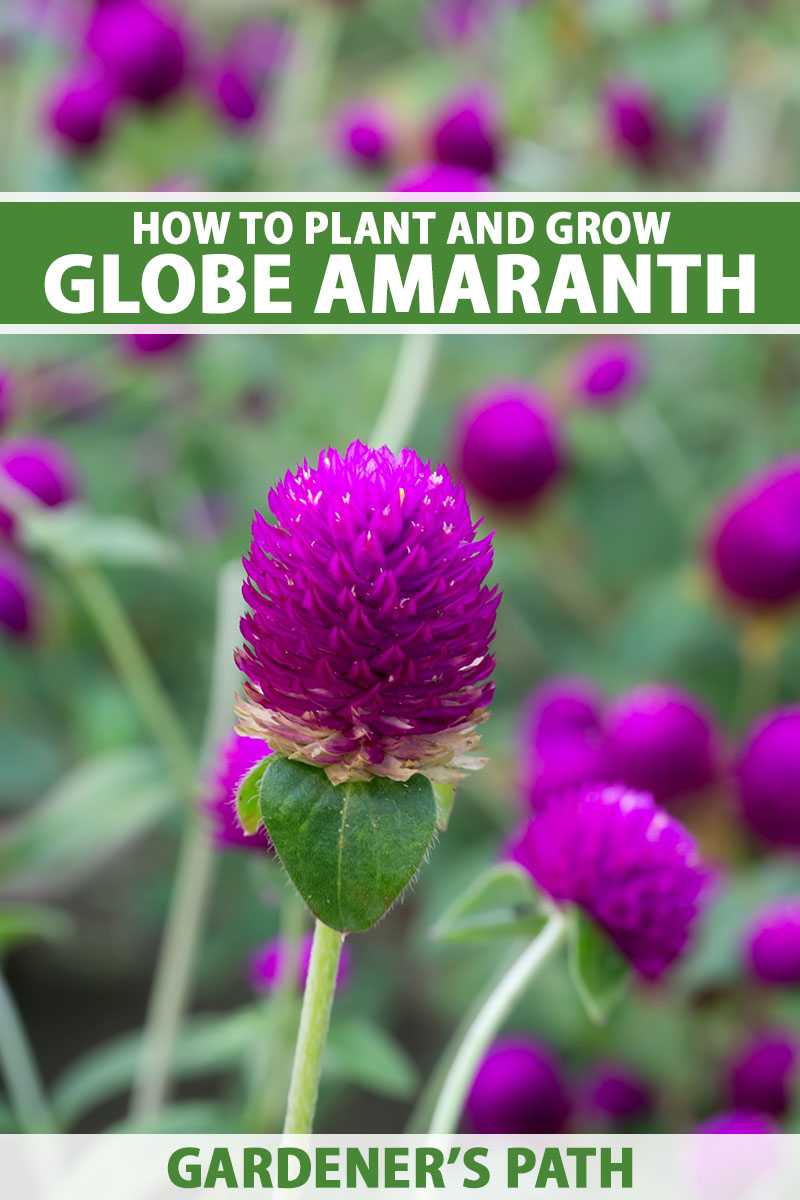1. Appearance:
Globe Amaranth is characterized by its distinctive spherical flower heads that resemble brightly colored pom-poms. The flowers can come in a variety of colors, including shades of purple, pink, red, white, and orange. The flower heads are made up of densely packed bracts, which are modified leaves that often have more vivid colors than the actual petals. The leaves of Globe Amaranth are simple, alternate, and somewhat lance-shaped.
2. Growth Habit:
Globe Amaranth plants are compact and bushy, typically growing to a height of about 1 to 2 feet (30 to 60 cm) and spreading up to 1 foot (30 cm) wide. They have a mounding growth habit and are well-suited for borders, flower beds, containers, and hanging baskets.
3. Flowering Season:
The flowering period of Globe Amaranth usually spans from late spring to the first frost of fall. One of the plant's key attributes is its ability to produce an abundance of flowers that remain vibrant for an extended period, making it a popular choice for cut flower arrangements and dried flower crafts.
4. Cultivation:
Globe Amaranth is relatively easy to grow and care for, making it a favorite among both novice and experienced gardeners. Here are some cultivation tips: Sunlight: Globe Amaranth thrives in full sun to partial shade. It prefers at least 6 hours of direct sunlight daily. Soil: Well-draining soil is essential for the plant's health. It can tolerate a range of soil types but prefers soil that is slightly acidic to neutral. Watering: While Globe Amaranth is somewhat drought-tolerant, consistent watering is necessary to encourage robust flowering. Water the plant when the top inch of soil feels dry. Fertilization: Applying a balanced, all-purpose fertilizer during the growing season can help promote healthy growth and flowering. Pruning: Deadheading (removing spent flowers) can encourage continuous blooming. Pruning can also help maintain a compact and tidy appearance.
5. Uses:
Ornamental: Globe Amaranth is primarily grown for its ornamental value due to its eye-catching flowers. It is often used in flower beds, borders, containers, and hanging baskets. Dried Flowers: The long-lasting flowers of Globe Amaranth retain their color and shape even after drying. This makes them popular for use in dried flower arrangements, wreaths, and crafts. Culinary and Medicinal Uses: In some cultures, Globe Amaranth has been used for culinary and medicinal purposes. The leaves are sometimes consumed as a vegetable, and the plant has been attributed with various health benefits.
6. Propagation:
Globe Amaranth can be propagated from seeds. Sow the seeds directly in the garden after the danger of frost has passed. They can also be started indoors and transplanted later.
7. Pests and Diseases:
Globe Amaranth is relatively resistant to pests and diseases. However, like any plant, it can still be susceptible to issues such as aphids, powdery mildew, and fungal diseases. Regular monitoring and proper cultural practices can help prevent and address such problems.






Super
ReplyDeletesuper
ReplyDeletehi
ReplyDelete